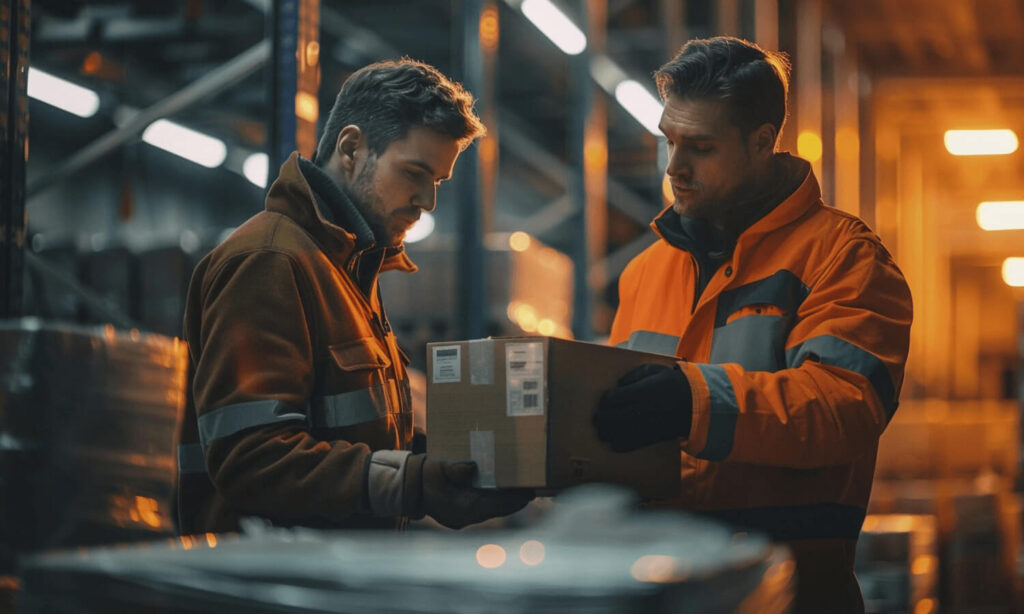
You get an email that your favorite skincare product is finally back in stock, and you rush to add it to your cart. Your favorite fashion brand is releasing an online-only drop, and you wake up at 6am, credit card in hand, typing in your address as fast as you can to checkout. It’s your sister’s birthday next week, and you’ve been saving up to order a surprise present you just know she’ll love.
All of these transactions made possible by ecommerce share one thing in common. Anticipation. The rush of successfully ordering something online is real, especially when it has limited availability and you’ve had to click faster and scroll sooner than the potentially thousands of others who want to make the same purchase as you. Online shopping, at times, can feel like a competitive sport, and while the serotonin rush you feel when you see “Order Received” at the end of checkout and the confirmation email in your inbox is great, the true gratification is delayed. For even the fastest shipping promises, we still hold our breaths until the product is at our doorstep and then in our hands. This is particularly true for those hard-to-find items, or last-minute gifts.
As with many stressful situations in life, the solution lies in clarity. For anyone who’s eagerly tracked an online order before, seeing your package go through each step in the delivery process provides renewed excitement and continued assurance that it will, in fact, make it to your door. Companies that emphasize shipment visibility, for both themselves and their customers, are able to improve their own processes and create greater brand loyalty, ensuring their products successfully reach their destinations and their customers greet them with a smile on their face. In fact, 24% of customers are more likely to become repeat customers when buying products from brands with order tracking. If you can ensure that nearly a quarter of your customers will come back because of one specific feature, you make sure to include that feature. Having well-developed shipment tracking information is even more useful, as customers are less likely to complain about order delays when they can follow their package’s journey along each step. By providing up-to-date tracking information, your customer can see that their order is arriving a day later than anticipated because of a carrier delay, such as staying overnight at a processing facility, at no fault of your company. This can help shift any frustrations in shipment delays felt by your customer to the logistics company, rather than your company, so you can avoid the potential blowback from a shipping issue and continue to build brand trust and loyalty.
Having clear shipping visibility also has internal benefits for companies. By always knowing where a product is in the shipping process, companies are much less likely to lose inventory and subsequently incur losses. Up-to-date location information is key in ensuring the efficiency and profitability of your supply chain. Advancements in communications technologies are allowing for more accurate and instantaneous location information sharing than ever before. Electronic logging devices (ELDs) have revolutionized tracking for shipments carried by trucks. New ELDs are utilizing 5G technology to transmit real-time location data much faster and more accurately than the LTE technologies previously in place. Lower latencies made possible by 5G are key in this improvement, and ELDs may be able to utilize networks that are up to 100x more efficient than their predecessors thanks to new 5G implementations. We can only expect further improvements in speed and efficiency as network technologies develop in the coming years, allowing for the most real-time tracking information imaginable. Previously limited to daily and hourly updates, companies and customers alike will be able to access up-to-the-second tracking updates in the very near future.
We can also look forward to greater shipment visibility as a result of more general technological advancements. Many tracking technologies utilize GPS systems, satellites, radio waves, and Bluetooth. Improvements in these technologies will only enhance tracking capabilities and reliability. Advancements in radio frequency identification (RFID) technologies have been and will continue to be key in parcel tracking. Continuously wider GPS adoption and AI learning capabilities incorporated in GPS systems allow for automated improvements and self-corrections, creating more accurate and reliable location services. As more satellites are designed and launched specifically for tracking purposes, truly global real-time tracking information will become not only possible but standard.
For both customers and companies, knowing where their purchases and products, respectively, are at all times provides highly valuable peace of mind. This peace of mind is well-reflected on the bottom line, as inventories more secure from loss prevention and more frequent purchases made possible by brand trust and loyalty help businesses run smoother and more profitably. Future improvements in tracking technologies will only strengthen this reality.






